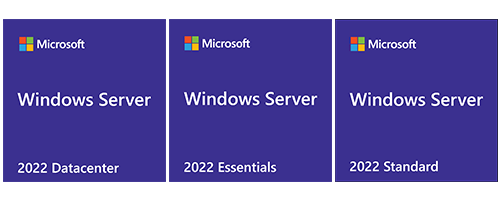Microsoft Storage Spaces Direct (S2D) - Differences between Azure Stack HCI and Windows Server
With the release of Azure Stack HCI, Storage Spaces Direct (S2D) can now be used on another operating system besides Windows Server. However, since both the license model and the functions are fundamentally different compared to Windows Server, you have to weigh up which version is right for your company.
If you want to run many Windows VMs on the hyperconverged storage, Azure Stack HCI is usually the more expensive choice because the Windows VMs have to be licensed separately to the hypervisor. However, this is offset by many advantages that can only be used with the new operating system.
Storage Spaces Direct (S2D) feature comparison
In the following table, you can see pretty quickly which variant is the best choice for your use case:
| Feature | Azure Stack HCI (21H2) | Windows Server 2022 |
|---|---|---|
| Pricing model | Subscription (9 Euro per core and month) | Purchase (Windows Server Datacenter) |
| Release cycle | annual | 2-3 years |
| Offline operation possible | No* (every 30 days an Azure connection must be established for billing) | Yes |
| Future feature updates | No | |
| Streched Clustering | Yes | No |
| Extended Security Updates | Yes | No |
| Windows VMs must be licensed separately | Yes | No (included in Datacenter) |
| Thin Provisioning (for HCI volumes) | Yes | No |
| Support for physical graphics cards in HA VMs | Yes | No |
| Running Windows Server 2022 Azure Edition | Yes | No |
| Unified management of hybrid infrastructures (Azure Arc) | Yes | No |
| Azure Virtual Desktop | Yes | No |
* even after 30 days the cluster is fully functional, but then no new VMs can be created until a connection to Azure is established
If you have chosen one of the two variants, you can find the certified Azure Stack HCI systems in our online shop.
Author: Florian Müller

